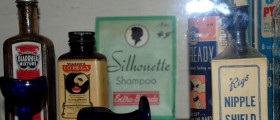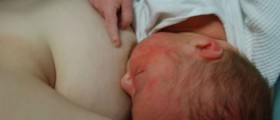
Breastfeeding is not as simple as many may think. Many women encounter different problems associated to breastfeeding such as low milk supply, mastitis, cracked nipples, plugged ducts, sore breasts, a pore latch, leaking milk, infant’s refusal to nurse, biting and engorgement. Although lactation difficulties can be quite distressing, there are numerous reasons why a mother should continue breastfeeding her baby.
Importance of Breastfeeding
Breastfeeding protects infants against infections. Through breast milk a mother can pass antibodies to infant, which prevents many childhood diseases. Breastfeeding also reduces the risk of childhood diabetes as well as of diabetes, heart disease, high blood pressure and breast cancer later in life. Breastfed babies have lower incidence of allergies comparing to formula-fed babies.
Mastitis and Blocked Ducts
Mastitis is an inflammation of the breasts due to a bacterial infection. This is common breastfeeding problem but in rare cases it may affect women who are not breastfeeding or pregnant and even men or babies. It is not known why mastitis develops in some women and in others it doesn’t. Milk stasis often causes mastitis as breast milk is produced faster than it is emptied leading to accumulation of milk which provides an excellent environment for bacterial growth. Mastitis may occur when infection spreads from cracked nipples to the lymphatic system of the breasts but sore nipples are also associated with mastitis. Mastitis is treated with antibiotics.
Blocked ducts occur when milk ducts become plugged, inflamed or sore. A blocked duct manifests as tender, swollen and hard lump in the breast and is accompanied with redness on the breast, fever and pain. The condition is similar to mastitis but it commonly resolves without the treatment. However, a blocked duct may sometimes develop into mastitis if it is not dealt with in time.
Mastitis and Blocked Ducts Treatment
Continuing breastfeeding can help to overcome both conditions. Women who suffer from either mastitis or blocked ducts are advised to nurse frequently. Also, it is crucial to completely empty the breasts. If the baby refuses to nurse, women can use a breast pump to express her milk.
Massaging the sore area and use of warm compresses can also help to relieve the symptoms and stimulate milk flow. Massage should be gentle but firm, starting at the top of the breast toward the nipple.
Mothers must make sure that their nursing position and latch is correct. Nursing while lying down or leaning over baby can help to unblock the milk duct due to gravity.
To reduce the pain and inflammation, cold compresses should be applied between breast feedings.














Your thoughts on this
Loading...